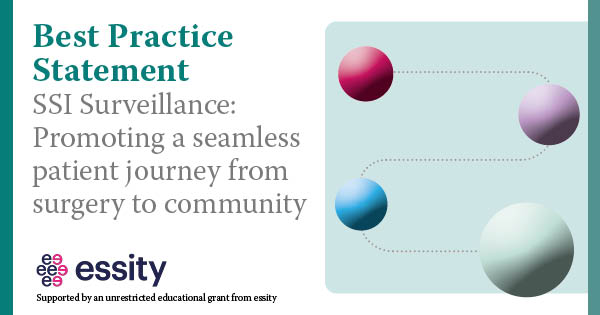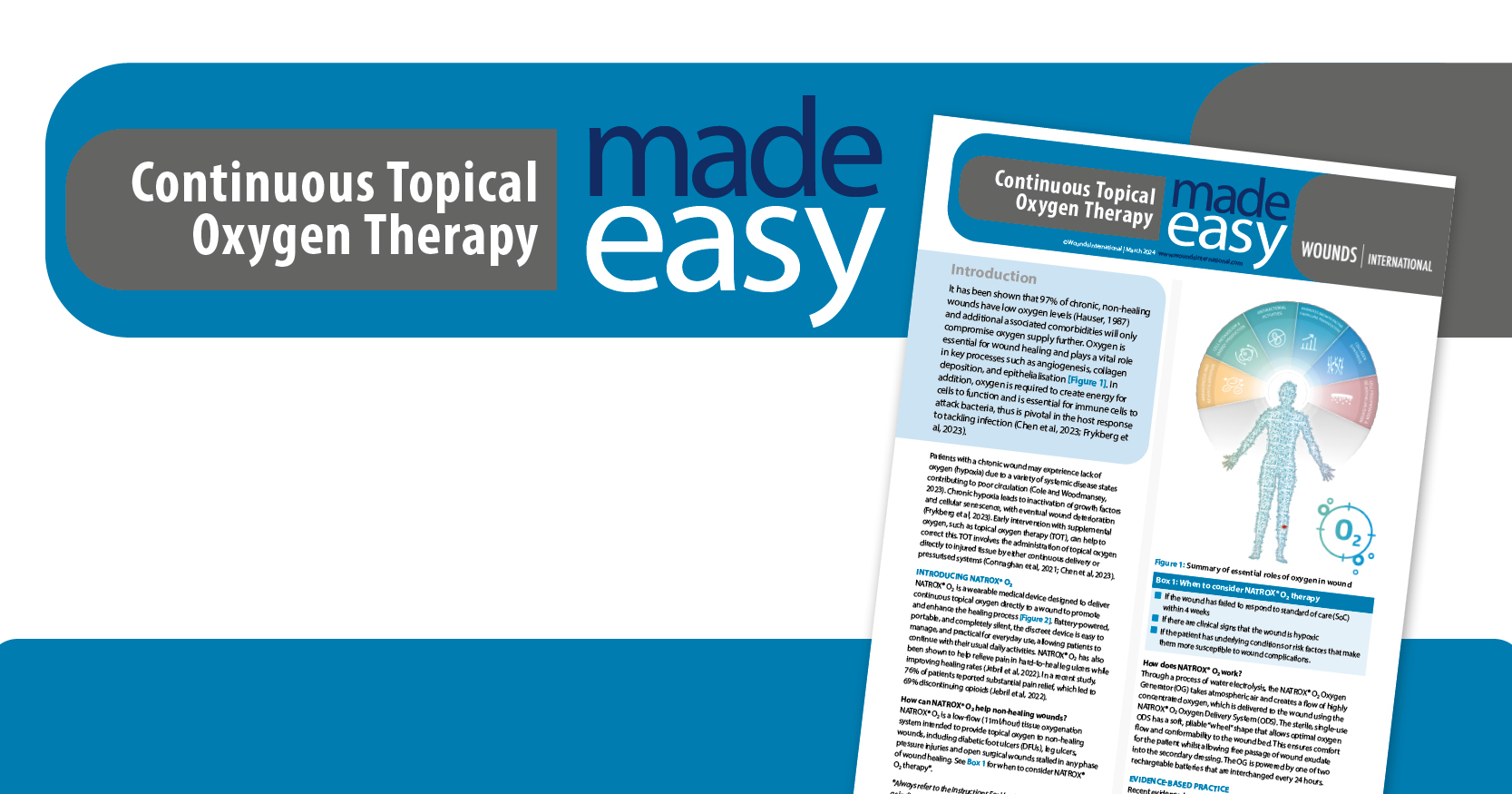ReferencesAli KM, Al-Jaff BMA (2021) Source and antibiotic susceptibility of gram-negative bacteria causing superficial incisional surgical site infections. International Journal of Surgery Open 30
Allegranzi B, Bagheri Nejad S, Combescure C et al (2011) Burden of endemic health-care-associated infection in developing countries: systematic review and meta-analysis. Lancet 377: 228–41
Badia JM, Casey AL, Petrosillo N et al (2017) Impact of surgical site infection on healthcare costs and patient outcomes: a systematic review in six European countries. J Hosp Infect 96(1): 1–15
Ballard MR, Miller NH, Nyquist AC et al (2012). A multidisciplinary approach improves infection rates in pediatric spine surgery. J Pediatr Orthop 32: 266–70
Berríos-Torres SI, Umscheid CA, Bratzler DW et al (2017) Centers for Disease Control and Prevention Guideline for the Prevention of Surgical Site Infection. JAMA Surg 152(8): 784–91
Borden TC, Bellaire LL, Fletcher ND (2016) Improving perioperative care for adolescent idiopathic scoliosis patients: the impact of a multidisciplinary care approach. J Multidiscip Healthc 9: 435–45
Cassini A, Plachouras D, Eckmanns T et al (2016) Burden of six healthcare-associated infections on European population health: Estimating incidence-based disability-adjusted life years through a population prevalence-based modelling study. PLoS Med 13(10): e1002150
CASSIS Project Group (2022) Implementing smartphone technology in practice using the Collaborative for Surgical Site Infection Surveillance (CASSIS) project: preliminary findings. Wounds UK 18(1): 34–41
Centers for Disease Control and Prevention (2016) Surgical site infection (SSI) event: Procedure-associated module. Available at: https://www.cdc.gov/nhsn/pdfs/pscmanual/9pscssicurrent.pdf (accessed 30 January 2023)
Centers for Disease Control & Prevention’s (CDC) National Healthcare Safety Network (NHSN) (2017) CDC-NHSN surveillance definitions for specific types of infections. Available at: https://www.cdc.gov/nhsn/pdfs/pscmanual/17pscnosinfdef_current.pdf (accessed 12 October 2022)
Cheng H, Chen BP, Soleas IM, Ferko NC, Cameron CG, Hinoul P (2017) Prolonged Operative Duration Increases Risk of Surgical Site Infections: A Systematic Review. Surg Infect (Larchmt) 18(6): 722–35
Chiwera L, Wigglesworth N, McCoskery C et al (2018) Reducing adult cardiac surgical site infections and the economic impact of using multidisciplinary collaboration. J Hosp Infect 100(4): 428–36
Coulter A, Ellins J (2006) Patient-focused interventions: a review of the evidence. The Health Foundation and Picker Institute Europe, London: 7–20
European Centre for Disease Prevention and Control (2012) Surveillance of surgical site infections in European hospitals – HAISSI protocol. Available at: https://www.ecdc.europa.eu/sites/default/files/media/en/publications/Publications/120215_TED_SSI_protocol.pdf (accessed 25 October 2022)
European Centre for Disease Prevention and Control (2017) Surveillance of surgical site infections and prevention indicators in European hospitals – HAI-Net SSI protocol. Available online at: https://www.ecdc.europa.eu/sites/default/files/documents/HAI-Net-SSI-protocol-v2.2.pdf (accessed 25 October 2022)
Giacobbe DR, Riccardi N, Vena A, Bassetti M (2020) Mould infections of traumatic wounds: A brief narrative review. Infect Dis Ther 9(1):1–15
Guest JF, Fuller GW, Vowden P (2020) Cohort study evaluating the burden of wounds to the UK’s National Health Service in 2017/2018: update from 2012/2013. BMJ Open 10: e045253.
Horan TC, Gaynes RP, Martone WJ et al (1992) CDC definitions of nosocomial surgical site infections, 1992: a modification of CDC definitions of surgical wound infections. Infect Control Hosp Epidemiol 13(10): 606–8
Horan TC, Andrus M, Dudeck MA (2008) CDC/NHSN surveillance definition of health care-associated infection and criteria for specific types of infections in the acute care setting. Am J Infect Control 36(5): 309–32
Inkster T, Cuddihy J (2022) Duty of candour and communication during an infection control incident in a paediatric ward of a Scottish hospital: how can we do better? Journal of Medical Ethics 48: 160–4
Katz MG, Jacobson TA, Veledar E, Kripalani S (2007) Patient literacy and question-asking behavior during the medical encounter: a mixed-methods analysis. J Gen Intern Med 22: 782–6
Lathan R, Sidapra M, Yiasemidou M et al (2022) Diagnostic accuracy of telemedicine for detection of surgical site infection: a systematic review and meta-analysis. npj Digit Med 5: 108
Li S, Renick P, Senkowsky J et al (2021) Diagnostics for wound infections. Adv Wound Care 10: 317–27
Macefield R, Reeves BC, Milne TK et al (2017) Development of a single, practical measure of surgical site infection (SSI) for patient report or observer completion. Journal Infection Prevention 18(4): 170–9
Mackenzie WGS, McLeod L, Wang K et al (2018) Team approach: preventing surgical site infections in pediatric scoliosis surgery. JBJS Rev 6: e2
Mangram AJ, Horan TC, Pearson ML et al (1999) Guideline for prevention of surgical site infection, 1999. Centers for disease control and prevention (CDC) hospital infection control practices advisory committee. Am J Infect Control 27(2): 97–134
McLean KA, Mountain KE, Shaw CA et al (2021) Remote diagnosis of surgical-site infection using a mobile digital intervention: a randomised controlled trial in emergency surgery patients. Digital Medicine 4: 160
Mellinghoff SC, Vehreschild JJ, Liss BJ, Cornely OA (2018) Epidemiology of surgical site infections with staphylococcus aureus in Europe: Protocol for a retrospective, multicenter study. JMIR Res Protoc 7(3): e63
National Wound Care Strategy Programme (2021) National Wound Care Strategy Programme Progress Report 2020-2021
National Institute for Health and Care Excellence (2019) Surgical site infections: prevention and treatment [NG125]. NICE, London. Available at: https://www.nice.org.uk/guidance/ng125 (accessed 17 October 2022)
Rawson TM, Moore LSP, Hernandez B, Castro-Sanchez E, Charani E, Georgiou P et al (2016) Patient engagement with infection management in secondary care: a qualitative investigation of current experiences. BMJ Open 6: e011040
Reinke J, Sorg H (2012) Wound repair and regeneration. Eur Surg Res 49: 35–43
Rochon M, Sanders J, Gallagher R (2017) Service design: a database approach to the management of digital images in the hospital setting. Wounds UK 13(4): 41–9
Rochon M, Morais C (2019) Five years on: a national patient and public involvement audit and economic assessment of photo at discharge. Wounds UK 15(3): 28–35
Rotter T, Baatenburg de Jong R, Lacko SE et al (2019) Clinical pathways as a quality strategy. Improving Healthcare Quality in Europe: characteristics, effectiveness and implementation of different strategies. Health Policy Series 53
Saeed KBM, Greene RA, Corcoran P et al (2017) Incidence of surgical site infection following caesarean section: a systematic review and meta-analysis protocol BMJ Open 7: e013037
Sandy-Hodgetts K, Carville K, Leslie G (2013) Determining risk factors for surgical wound dehiscence: A review of the literature. International Wound Journal 12(3): 265–75
Sandy-Hodgetts K, Leslie G, Lewin G, Carville K (2016) Surgical wound dehiscence in patients referred to a Western Australian community nursing service during 2010: Time and cost to healing. Journal of Wound Care 25 (7): 377–83
Sandy-Hodgetts K, Carville K, Leslie GD (2018) Surgical wound dehiscence: a conceptual framework for patient assessment. J Wound Care 27: 119–26
Sandy-Hodgetts K, Ousey K, Conway B et al (2020) International best practice recommendations for the early identification and prevention of surgical wound complications. Wounds International
Sandy-Hodgetts K, Alves P, Conway B et al (2022) ISWCAP Consensus Document: Optimising prevention of surgical wound complications: detection, diagnosis, surveillance and prediction. Wounds International
Sanger PC, Hartzler A, Han SM et al (2014) Patient perspectives on post-discharge surgical site infections: towards a patient-centered mobile health solution. PLoS One 9(12): e114016
Sievert DM, Ricks P, Edwards JR et al (2013) Antimicrobial-resistant pathogens associated with healthcare-associated infections: summary of data reported to the National Healthcare Safety Network at the Centers for Disease Control and Prevention, 2009-2010. Infect Control Hospepidemiol 34: 1–14
Tanner J et al (2011) Surveillance of surgical sites in primary care. Nursing Times 107: 9, 12–4
Tanner J, Padley W, Davey S et al (2013) Patient narratives of surgical site infection: implications for practice. J Hosp Infect 83(1): 41–5
Tipper GA, Chiwera L, Lucas J (2020) Reducing Surgical Site Infection in Pediatric Scoliosis Surgery: A Multidisciplinary Improvement Program and Prospective 4-Year Audit. Global Spine J 10(5): 633–9
UK Health Security Agency (2013) Protocol for the Surveillance of Surgical Site Infection. Available at: https://assets.publishing.service.gov.uk/government/uploads/system/uploads/attachment_data/file/1048707/Protocol_for_the_Surveillance_of_Surgical_Site_Infection.pdf (accessed 12 October 2022)
UK Health Security Agency (2019) Operating Procedure Codes Supplement (OPCS). Available at: https://assets.publishing.service.gov.uk/government/uploads/system/uploads/attachment_data/file/1069633/OPCS_codes_supplement_UKHSA.pdf (accessed 31 October 2022)
UK Health Security Agency (2022) Surveillance of surgical site infections in NHS hospitals in England. Available at: https://assets.publishing.service.gov.uk/government/uploads/system/uploads/attachment_data/file/1087917/SSI-annual-report-2020-to-2021.pdf (accessed 03 January 2023)
World Health Organization (2016) Guidelines on core components of infection prevention and control programmes at the national and acute health care facility level. Geneva: World Health Organization
World Health Organization (2018a) Protocol for surgical site infection surveillance with a focus on settings with limited resources. Geneva: World Health Organization
World Health Organization (2018b) Global guidelines for the prevention of surgical site infection. Geneva: World Health Organization
Wilson J (2013) Surgical site infection: the principles and practice of surveillance. Part 1: Key concepts in the methodology of SSI surveillance. J Infect Prev 14(1): 6–12
Wilson J (2017) Preventing surgical site infection: The challenge of ‘getting it right first time’. J Infect Prev 18(4): 164–6
Woelber E, Schrick EJ, Gessner BD, Evans HL (2016) Proportion of surgical site infections occurring after hospital discharge: A systematic review. Surg Infect (Larchmt) 17(5): 510–9
World Union of Wound Healing Societies (2016) Closed surgical incision management: Understanding the role of NPWT. Wounds International
World Union of Wound Healing Societies (2018) Surgical wound dehiscence: improving prevention and outcomes. Wounds International
World Union of Wound Healing Societies (2020) Optimising wound care through patient engagement. Wounds International
Wounds UK (2020) Best Practice Statement: Post-operative wound care – reducing the risk of surgical site infection. Wounds UK
Young A, McNaught C (2011) The physiology of wound healing. Surgery 29(10): 475–9







